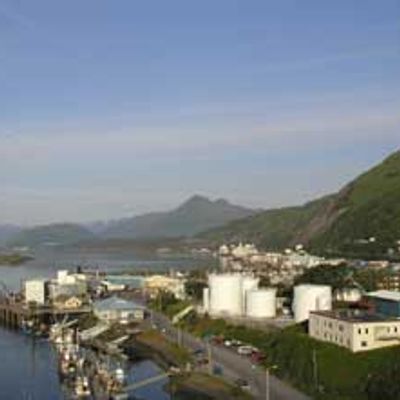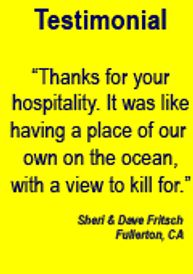About Kodiak

Kodiak Island
Kodiak is called "The Emerald Isle" for its incredible green landscape during the summer, but it's also famous for huge Kodiak brown bears and world-class fishing. Kodiak is one of the largest commercial fishing ports in the nation.
The Kodiak Archipelago is a large group of islands about 30 miles off the coast of the Alaska Peninsula. The archipelago is 177 miles long and encompasses nearly 5,000 square miles.
At just over 3,500 square miles, Kodiak Island is the largest island in the group and the second-largest island in the United States. The city of Kodiak, at the northeastern tip of the island, is about 250 miles south of Anchorage and is the main population center. The city of Kodiak is the major supply and transportation hub for the archipelago's six villages. Five are located on Kodiak Island, and one is on Spruce Island. Each of the villages is accessible only by aircraft or boat.
Alutiiq Natives:
The Kodiak Archipelago and the surrounding areas are home to the Alutiiq natives. Kodiak's environment, with its rich marine waters, rocky shores, and productive uplands, has provided food and raw materials for hunting and gathering for many thousands of years. Kodiak's first settlers were drawn to Kodiak for the sea mammals, seabirds, fish, and shellfish that were the foundation of their subsistence lifestyle.
Alutiiq culture and language are most closely related to those of the Yup'ik and Inupiaq. In prehistoric times, the Alutiiq shared many items of technology with other northern coastal peoples. They built sod houses which were lit by stone oil lamps. They hunted sea mammals from skin-covered kayaks equipped with sophisticated harpoons. They wore waterproof clothing stitched from seal intestines, beach grass, and sinew.

Your hosts family are descendants of the Alutiiq people. The family still fish salmon commercially in Uganik Bay, a site handed down from their ancestors. In fact, an archeological excavation at the site unearthed a 4,000-year-old native home that produced several artifacts currently on display at the Alutiiq Museum. For more information about the Alutiiq people and their culture, plan to visit the Alutiiq Museum.

Russian Era
The Russian colonization of the Kodiak Island Archipelago began in the mid-1700s. Russian traders and merchants came to the area seeking valuable sea otter pelts. Alexander Baranov established a trading post at St. Paul Harbor in 1792. Kodiak became the first capital of Russian America and was a major fur-trading center for many years. An otter pelt warehouse built by Baranov is now the Kodiak History Museum, one of the oldest structures on the West Coast. The museum's collection includes prehistoric Native artifacts, remnants of Russian colonization, mementos of Alaska's territorial days, and WWII exhibits.
The lasting legacy of the Russian era is the Russian Orthodox religion. The Holy Resurrection Russian Orthodox Church, with its blue onion-shaped domes, is a prominent fixture in downtown Kodiak and is located near the Baranov Museum. It houses the reliquary of St. Herman, who was canonized at the church in 1970. Nearby are St. Herman's Theological Seminary, the Veniaminovna Museum, and a log chapel commemorating the bicentennial of the Orthodox Church of America in 1994.
World War II
Kodiak became a major staging area for North Pacific operations during World War II. The population of Kodiak exploded to more than 25,000. A submarine base and air station were constructed at Women's Bay, and an army outpost was established near the Buskin River. Bunkers and gun emplacements were built at Chiniak, Long Island, and Fort Abercrombie. Japanese forces occupied Kiska and Attu in the Aleutians but were turned back by American and Canadian forces.
Today, the military facilities at Women's Bay are home to the largest Coast Guard base in the United States. The infrastructure built for WW II can be seen all over the Kodiak area. Fort Abercrombie is now a State Park and is home to the Kodiak Military Museum, located within view of A Captain's Quarters.

Fishing Industry

Today, a thriving commercial fishing industry is the economic engine that drives Kodiak. Consistently ranked as one of the top three fishing ports in the US, Kodiak is homeport to over 800 vessels.
Fishing and fish processing account for over 40% of the total industrial payroll in Kodiak. Those sectors of the Kodiak economy not directly engaged in fishing exist to provide support services for the fishing industry. Fish harvesting and seafood processing still dominate the employment opportunities in Kodiak.


.png/:/cr=t:0%25,l:0%25,w:100%25,h:100%25/rs=w:388,cg:true)

A Captains Quarters
4149 Woodland Dr., Kodiak, Alaska 99615
This website uses cookies.
We use cookies to analyze website traffic and optimize your website experience. By accepting our use of cookies, your data will be aggregated with all other user data.